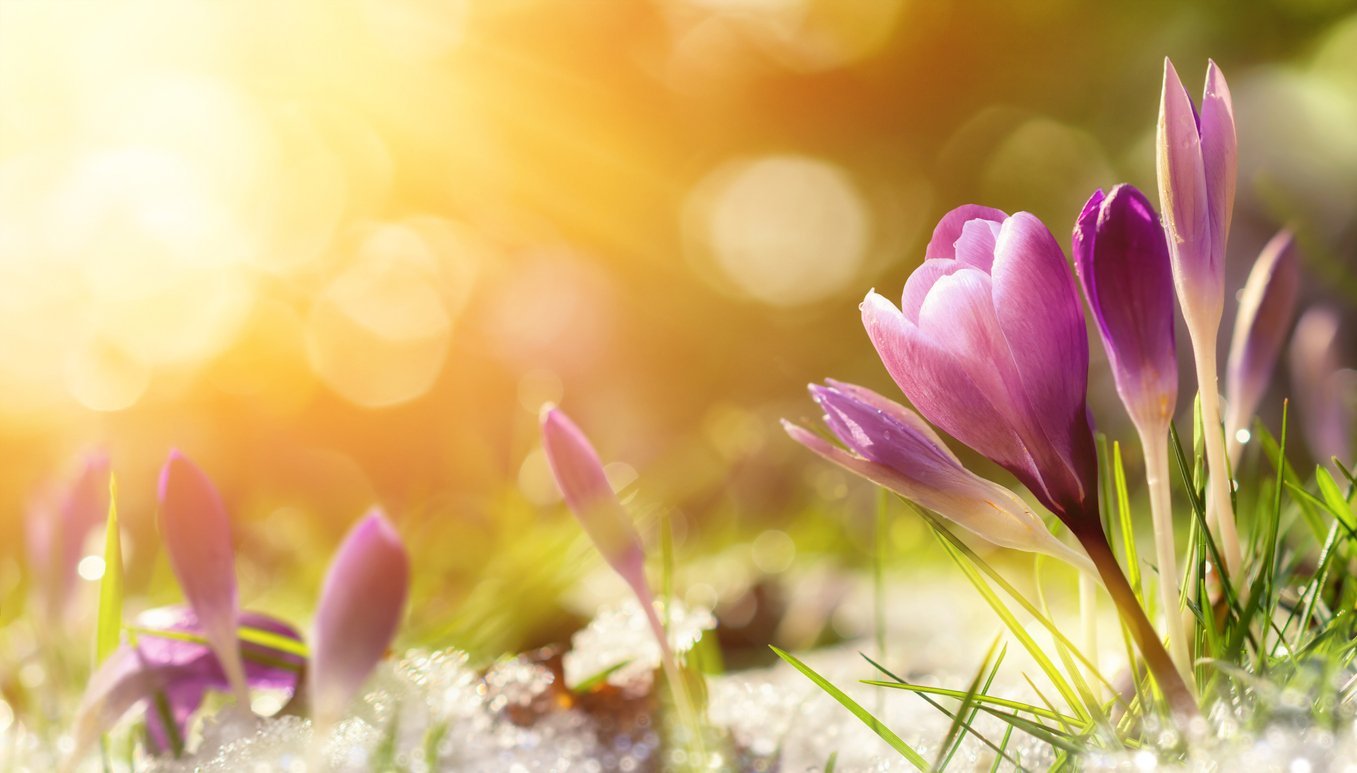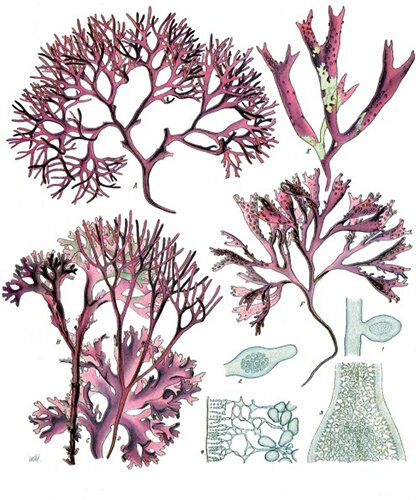The Golden Hour: High Summer and the Sun
Happiness, freedom, confidence, vitality
For many, the energetic vibe of summer is defined by the sun: life-giving light and warmth beam across the solar system from our star. The sun card in the tarot deck depicts uplifting imagery that shows how hard work (making it through winter?) pays off with a much needed joyful reprieve. The universe has your back, so let yourself soak in the energy. The long warm days do not last forever, so enjoy the present moment!
Here in the Northern Hemisphere we eagerly absorb as much solar energy as possible during our brief sojourn under the warm, summer sky. Similarly, our plant allies leaf out to their fullest extent, optimally building their energy stores in order to produce flowers and fruit as the season progresses. Flowers and fruit come in a myriad of jewel tones, attracting birds, animals, and pollinating insects. The pollen, itself, is often in hues of yellow; the pollen is truly the source of life. For the pollen holds the key to the next generation of plants, that support all life on earth, in each golden grain.
Meditating on the sun and the color yellow
The color yellow has also long been associated with the sun, and its positive, uplifting energy. In pagan tradition, calling upon the four directions often opens any ritual. We begin in the east, toward the rising sun. The east is associated with the color yellow, as well as the element of air and intellectual curiosity. Turning toward the east, we look for a fresh start, or a new beginning.
In Hindu belief, yellow is linked to the third chakra, Manipura. Manipura is located at the solar plexus (aptly named), just above your belly button. It is the seat of personal power. The sun is the center of power in our entire solar system, and here, resting right at your center, represented by a beautiful blooming golden yellow lotus, is your own internal sun: your own source of power. Yoga sutra 3.27 in Patanjali’s Sutras says “By samyama on the sun, knowledge of the entire solar system is obtained.” In the ponderance of this sutra, or general truth, we connect macrocosm to microcosm. As we study the sun, our star, and how it gives us life in the macrocosm, we can similarly focus on our internal fire, or agni, the sun within us that reveals personal truths and powers.
Close your eyes for a moment and focus your attention on your midsection right above the belly button but below the heart. Perhaps lay your hands on this place and feel as your breath rises and falls. Tremendous power your breath has, as it fuels your vessel from the moment you are born until the time you transition back to the earth. Feel a warming sensation in your solar plexus. Imagine the feeling of facing toward the sun on a beautiful summer day, the breeze blowing gently around you, and feel the warmth begin to spread its healing and energizing power throughout your whole body. You might envision a yellow or golden lotus flower blooming and unfurling with the light of the sun radiating outward around your whole being. Sit here for a few moments in the power of your own being, trusting that indeed, the universe does have your back. Feel as your mood lifts, and your physical and emotional energy levels elevate.
Warm seasonal plant allies
The most obvious of summer’s floral beauties is the sunflower. Growing tall and proud in sprawling fields, they encourage us with feelings of positivity and strength. The scientific genus name for the sunflower is Helianthus. It comes from the Greek words "helios", meaning sun, and "anthus", meaning flower. The ancient Greeks believed that sunflowers turned towards the sun because of Clytie's adoration of Apollo, the God of the Sun. Each morning, she awoke at dawn to greet Apollo, and bask in his warmth, as he soared from the east to the west.
Here are a few of our other local favorites for foraging, cultivating, and wildcrafting medicinal goods:
St. John’s Wort (Hypericum perforatum): St. John’s Wort is associated with the sun and is a traditional herb commonly harvested and used in Midsummer celebrations. The most popular medicinal use of St. John’s Wort is for depression, and when used topically, it can treat minor burns and wounds or ease sore joints.
Mullein (Verbascum thapsus): Fuzzy and soft, the leaves of the mullein plant not only help respiratory issues, but feel like lamb’s ears. The tall stalks appear biennially with yellow five-petaled flowers at the top in late July or August. The stalks were historically dried and dipped in wax to make special ritual candles, and the flowers can be infused in oil or made into a tincture to treat ear infections!
Evening primrose (Oenothera lamarckiana): Most evening primrose begins blooming in the late afternoon and continues throughout the night, closing up before noon the next day, depending on the temperature. It has lemon-yellow flowers that bloom from May to July. The oil can be taken orally or as a suppository to help relieve PMS symptoms and other issues related to hormone imbalance, and is also commonly used in skin care products.
Goldenrod (Solidago spp): There are more than 50 species native to the Americas and several species native to Europe. Goldenrod does not cause allergies, but is commonly confused with the allergy-inducing ragweed, another native plant that flowers at the same time as goldenrod and often grows alongside it in fields. It is good for general anti-inflammatory purposes, and we LOVE using it for a pop of sunshine in our dried herb bundles!
All of the herbs listed above thrive wildly in the northeast and can be sustainably harvested and infused in oil to make an all-purpose healing salve! Dandelion, yarrow, and calendula are some other great healing and moisturizing (and yellow!) summer herbs we like adding to the recipe.
Simply pick and chop up your herbs (flowers and leaves) and fill a mason jar ¾ with plant material. Pour your favorite oil over the herb clippings to fill the mason jar (we like a blend of grapeseed, coconut, almond, and jojoba for skin care). Let the herbs infuse in the oil in a dark cool place for 2-4 weeks then strain.
To make 6 oz of salve, mix 5 fl oz of the infused oil with .25 cups of beeswax and 1 tablespoon of shea butter (or cocoa butter) and heat/stir slowly in a double boiler until everything is melted and combined. Optional: add 10 drops of vitamin E and an essential oil blend of your choice (~60 drops) once the mixture cools a bit then pour into three 2 oz tins and let set.
During summer, when we walk through our blooming gardens and the vibrant fields we see the happy and vibrant yellow hues, and we immediately feel safe, loved, and enlivened. Even the bees that drone slowly in the heavy warmth boldly display their golden stripes and pollen-laden hind legs. Summer, at its finest.
Looking forward to fall
As the wheel of the year turns, the strength of the sun’s light wanes. But fear not, the cooling powers of autumn usher in relief after months of summer heat. The time to rest is not far off. Visions of strolling down a russet-colored October road, cool breezes with a tinge of wood-smoke and a hot apple cider to drink along the old fieldstone wall in the woods began to dance in your subconscious. Autumn is the time to honor all that will go back to the earth so it can be reborn once again.









